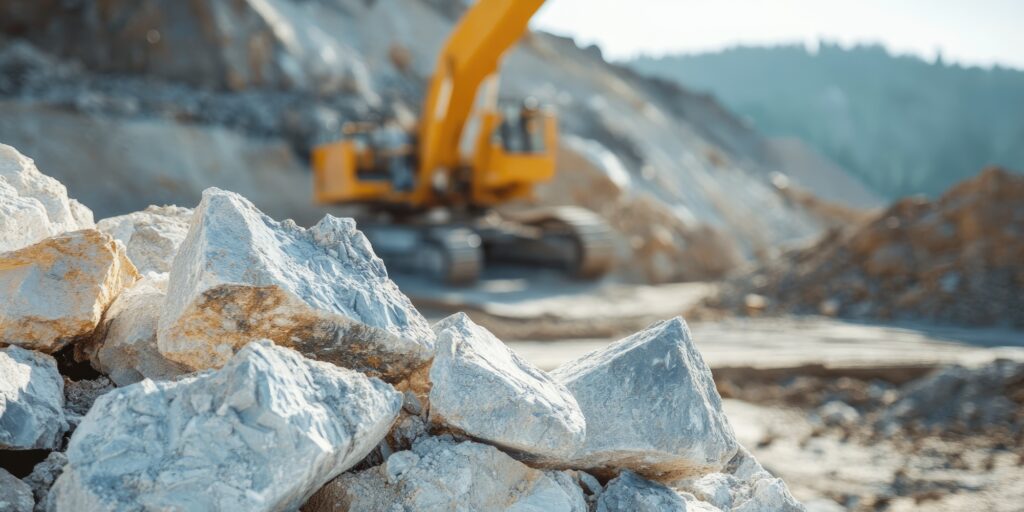
Guide
Mining Tools: A Guide to Mining Equipment & Mining Machines
“Mining tools” is a general phrase that refers to all the mining equipment and mining machines used to extract minerals from the earth.
Mined minerals appear in almost every consumer product—from cars, to electronics, to jewelry and more. Minerals like uranium and coal are major energy sources that account for 50% of the US’s energy supply.
All of these resources are obtained through the use of various types of mining tools and mining equipment.
Before we begin identifying key mining tools and mining machines, it’s important to understand the different types of mining methods for which these tools are used.
Toward that end, the first section of this guide covers the different mining techniques and methods. After we provide that context for the different ways mining is done we’ll dive into the specific tools used for each type of mining.
Types of Mining Methods
Mining falls into 4 categories: underground, open surface (pit), placer, and in-situ mining.
The type of materials that a mining operation is trying to extract and the mining techniques they’re using to extract those minerals directly informs the types of mining tools that are used.
That being said, a basic method is always followed for surface and underground mining. That method is:
- Extraction. Extraction consists of digging, drilling, or blasting into the earth to extract minerals.
- Material handling. Material handling consists of sorting through materials, sending target minerals to a processing site, and sending irrelevant materials to a waste area.
- Material processing. Material processing is where minerals go to be smelted, crushed, grinded, or refined, converting the minerals into finished products for distribution.
Surface Mining Methods
Surface mining is a mining method used to extract minerals that are close to the earth’s surface.
Mining methods for surface mining include:
- Strip mining. Strip mining removes thin layers of surface material in order to reach the mineral. The layer above the mineral is called overburden, and it typically consists of soil and rocks. This surface mining technique is commonly used to extract coal that is laying near the surface, and it is a method that is used to prepare the area for open-pit mining.
- Open pit mining. Open-pit mining is a technique that involves drilling into the earth’s surface to set explosives. These explosions create a large pit for miners to access underlying rocks. This surface mining technique can be used to extract silver.
- Quarrying. Quarrying is a process in which miners cut blocks of hard stone. Miners will also extract by-products of these hard stones, like sand, gravel, or small stones. Quarrying is made accessible by open-pit mining. This surface mining technique is typically used to extract granite, marble, and other hard stones.
- In-situ leach (ISL) mining. In-situ mining is primarily used for extracting uranium, which is used for nuclear power. This surface mining technique consists of dissolving the mineral in place without moving rock from the surface layers.
- Placer mining. Placer mining is used to extract gold from sand or gravel by using pans and water. Gold, which has a higher density than sand and gravel, will sink faster, making it easier to collect.
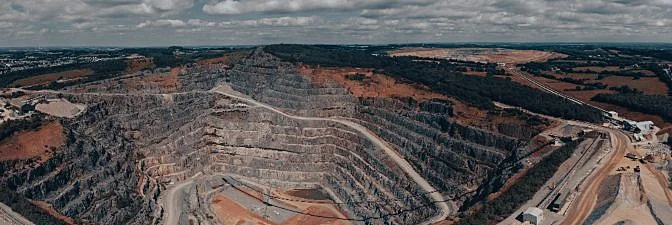
Underground Mining Methods
There are several minerals that cannot be extracted by surface mining techniques.
In this case, underground mining will be used. Because of the confined nature of underground mining, the extraction process is different.
Mining methods for underground mining include:
- Blast mining. Blast mining, just as it sounds, utilizes explosives to remove hard rock layers, loosen rocks, and open up underground mining areas.
- Room and pillar mining. Room and pillar mining consists of the construction of rectangular pillars to support the weight of the ceiling while miners clear out the minerals from around the pillars. This technique can be done by specialized underground mining equipment.
- Retreat mining. Retreat mining is the process of removing the pillars from room and pillar mining. This underground mining technique strategically removes the pillars, extracting the remaining mineral from the mine. As the pillars are removed, the mine collapses onto itself. This is an incredibly dangerous underground mining technique. A lot of careful planning goes into the pillar removal process to prevent injury and death.
- Block caving. Block caving is a large-scale mining method that requires a longer development stage than any other underground mining method. This method blasts a gap at the bottom of the rock mass which causes the rock above to break up and collapse to fill the void while the surface of the mie caves inwards.
- Cut and fill mining. Is a small-scale mining method that involves cutting horizontal slices in the orebody. Once the level is excavated, the level is backfilled and excavation moves up to the next level.
- Drift and fill mining. Drift and fill mining is used when an orebody is wider than the drift itself. Drifts will be mined adjacent to one another, backfilling one before excavating another drift.
- Longwall mining. Longwall mining is commonly used in coal mines and involves the use of a shearer set on a kilometer long track to grind coal from the mine face.
- Shrinkage stope mining. Shrinkage stope mining is a highly productive mining method that is used to mine steep, uniform orebodies. Primary and secondary stopes are blasted throughout the orebody, with the primary stope being excavated and backfilled before extracting ore from the secondary stope.
- Sublevel caving. Sublevel caving is used on orebodies with a steep dip. Ore is extracted from the footwall side to prevent fracturing. The orebody is blasted from the top down while the host rock on the hanging wall caves.
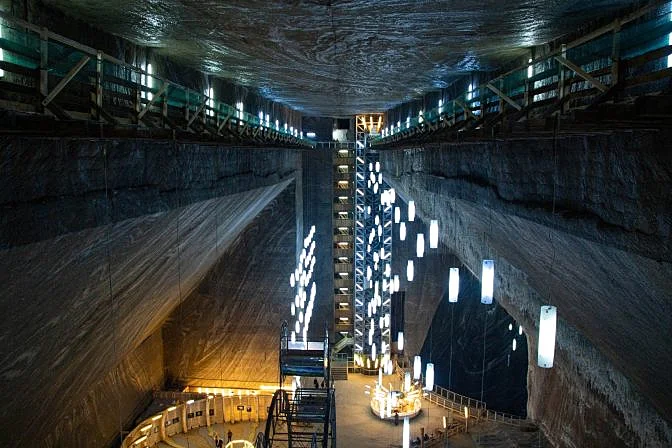
Mining Equipment for Soft Rock Mines Vs. Hard Rock Mines
Different mining tools are used for different types of minerals and mining techniques.
There are specific mining tools for soft rocks and specific tools for hard rocks, just as there are specific mining machines for surface mining techniques and specific tools for underground mining techniques.
The basic difference between soft rock mining and hard rock mining is that hard rock mining requires the use of explosive, and soft rock mining does not.
Soft Rock Mines
- Do not require explosives for extraction.
- Examples of soft rock minerals include salt, coal, bauxite, and potash.
- All of these minerals can be mined using only specialized mining machinery.
Hard Rock Mines
- Require explosives for extraction.
- Examples of hard rock minerals include copper, gold, iron, lead, platinum, silver, uranium, and zinc.
- In hard rock mines, hydraulic drills are used to drill holes where explosives can be inserted and then blasted.
Mining Tools and Equipment
There are a lot of different types of mining tools.
Instead of naming all these tools in one giant list, we’ve organized this guide into the different types of mining methods and the tools used for each one.
But before we dive into those specific categories, we wanted to share a list of mining tools and equipment by category so you can have a general understanding of what each category contains.
Below is a general list of the four kinds of mining tools and equipment—click the links in each one to jump to a section devoted to it.
- Miner tools. Tools that miners carry on them, like pickaxes, hammers, chisels, and shovels. These are classic mining tools that many are familiar with, so we won’t dive into more detail on them.
- Mining PPE. Equipment that miners use to stay safe while working.
- Surface mining equipment. All the tools and mining machines used for surface mining.
- Underground mining equipment. All the tools and mining machines used for underground mining.
Now that we’ve covered things at a high level, let’s dive into each specific category.
Miner Tools: Essential Handheld Tools for Miners
Miner tools, also known as manual mining tools, are the handheld implements that miners carry with them during the extraction process. While industrial machinery has transformed the mining industry, these traditional tools remain essential for precision, accessibility, and work in confined or small-scale areas where larger machines cannot be used. Whether in underground mining or surface operations, these tools are still crucial for tasks such as digging, breaking rocks, and carving through tough materials to access valuable minerals.Common Miner Tools and Their Uses
Miner tools come in various shapes and sizes, each designed for a specific task or type of mining. While larger machines take care of bulk extraction, these handheld tools provide miners with the flexibility and precision needed for detailed work and in places where mechanical equipment can’t easily access. Below are the most common tools found in the hands of miners:- Pickaxes. One of the most recognizable mining tools, the pickaxe is used to break up hard rock, soil, and mineral deposits. The pointed ends of a pickaxe make it ideal for penetrating dense materials, especially in underground mining operations. It allows miners to carve through tough surfaces with precision.
- Hammers. Essential for breaking rocks, hammers are often used in combination with chisels to break down larger rock formations or minerals. Hammers come in various sizes and weights, depending on the task at hand. Heavy hammers are used to break large rocks, while lighter hammers are more suited for finer tasks such as chiseling and shaping rocks.
- Shovels. Shovels are crucial for digging, loading, and moving materials, whether it’s loose dirt, rocks, or broken minerals. In mining operations, shovels are used both above ground and underground to move materials from one area to another or to clear paths for other tools and machinery. The design of the shovel varies based on the material being worked with and the environment.
- Chisels. Used for precision cutting and shaping, chisels are particularly useful in tasks where miners need to carve through rock with accuracy. Miners use chisels to help extract specific minerals by breaking away the surrounding rock or soil. They also come in various sizes and are often used in combination with hammers to break down larger pieces of material.
- Mattocks. A combination of a pickaxe and a hoe, the mattock is used for digging, chopping, and prying apart tough soil or rock. This tool is especially useful for breaking up hard soil layers and for accessing minerals beneath the surface. The mattock’s design allows it to be more versatile, making it a popular tool in both underground and surface mining.
- Prybars. Used to pry apart rock, soil, or other materials, prybars help miners loosen stubborn materials from their positions. These are essential tools for creating gaps in rock formations or loosening packed soil, making them useful for initial stages of mining when machinery may not be applicable.
- Digging Bars. These tools are similar to pry bars but are specifically designed for larger excavation tasks. They are often used to dislodge rocks or clear debris in areas where more precision is needed. Their heavy-duty construction ensures they can withstand the significant forces required in hard rock environments.
When Are Miner Tools Used in Modern Mining?
Although most large-scale mining is carried out using heavy-duty machinery, miner tools still play a significant role in several key areas. These tools are particularly useful in:- Smaller-scale mining. In operations where large machines are impractical, such as in tight spaces or low-budget mining projects, miners rely on these handheld tools.
- Exploration. Before large machinery is brought in, manual tools like pickaxes and shovels are often used to gather initial samples and survey a site for its mineral potential.
- Confined spaces. In underground or narrow mining areas where equipment can’t fit, miners use handheld tools for precision work in smaller, more confined spaces.
- Refining and final extraction. When it’s time to extract valuable minerals or clean up the site, these tools come in handy for fine-tuning the process and completing small, delicate tasks.
Why Are Miner Tools Still Important in Modern Mining?
Despite the rise of automated mining equipment, miner tools remain indispensable for several reasons:- Precision and flexibility. Handheld tools provide flexibility for working in tight spaces and for completing detailed tasks with precision that machines might miss.
- Accessibility. These tools are portable and inexpensive, making them essential for quick access to specific areas of a mine or for minor tasks.
- Safety. In certain mining operations, manual tools are safer to use in hazardous conditions than heavy equipment, especially when navigating narrow tunnels or during emergency situations.
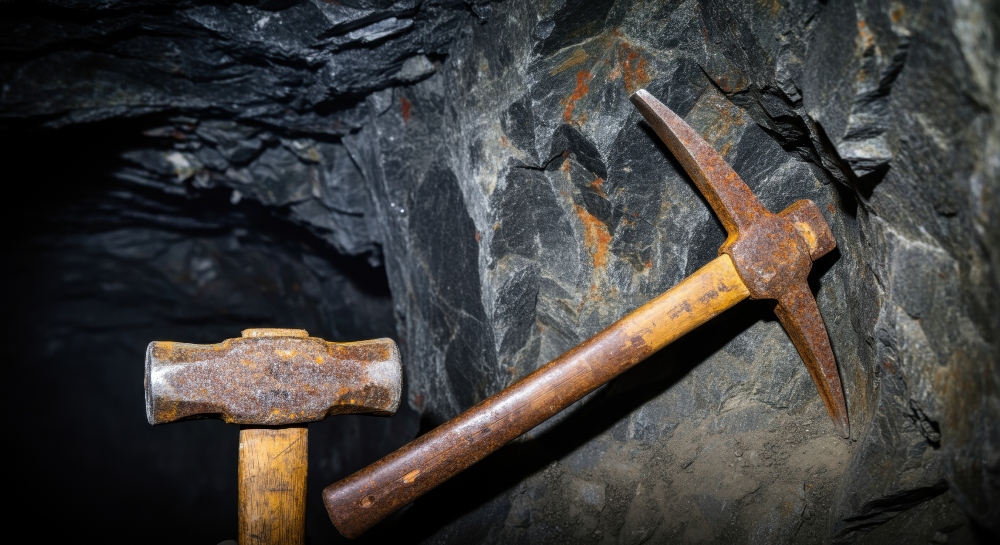
Mining PPE
In addition to traditional mining tools, miners also carry mining personal protection equipment (PPE) on them at all times, including things like:- Air respirator systems. For breathing clean air.
- Cap lights. Lights that are attached on top of protective headwear.
- Hearing protection. For working in loud conditions.
- Miner’s pouch. A miner’s belt that provides lumbar support and carries cap light battery packs, tools, and a self rescuer.
- Protective communications. Wireless two way communications, plus a two way phone for emergency situations.
- Protective eyewear and headwear. To help protect the head from falling debris, etc.
- Reflective clothing. A safety measure so miners can easily be seen.
- Self-rescuers. A personal emergency respiratory protection device against carbon monoxide and other harmful noxious gases.

Surface Mining Equipment
Here are all the types of mining tools used in surface mining, organized alphabetically:- Blasthole drills. Blasthole drills are mining machines that drill holes into the earth’s surface for placing explosives
- Bucket-wheel excavators. Bucket-wheel excavators are used in open-pit mining. These mining tools continuously dig, transport, and load materials, excavating up to 240,000 cubic tons of minerals per day.
- Dozers. Dozers are earth-movers that drag dirt from one area to another.
- Dragline excavators. Dragline excavators are used in strip mining to remove overburden. The massive bucket system is attached to large booms and dragged across the surface of the earth for excavation. This is one of the largest pieces of land mining equipment used in mining, or any industry.
- Drones. Drones for mining can be used for overground surveys to track progress, calculate stockpiles in and out of storage spaces, and inspect equipment and machinery.
- Graders. Graders are used to create viable roads for mining trucks so they can transport minerals out of the mine and keep them profitable.
- Highwall miners. Highwall miners are mining machines that extract coal from exposed seams. The highwall miners rotate up and down a wall, grinding mineral deposits out of the walls. These mining tools are also used for trench mining.
- Mining trucks. Mining trucks are essentially large dump trucks used for mining. New technology has developed fully autonomous mining trucks that use both LiDAR and radar to freely move around a mining site.
- Shovels. Shovels are used for digging and to extract broken rocks and minerals.
- Wheel tractor scrapers. Wheel tractor scrapers are another earth-mover that operates similarly to a carpenter’s plane. Unlike dozers, scrapers have the capability to load and carry materials.
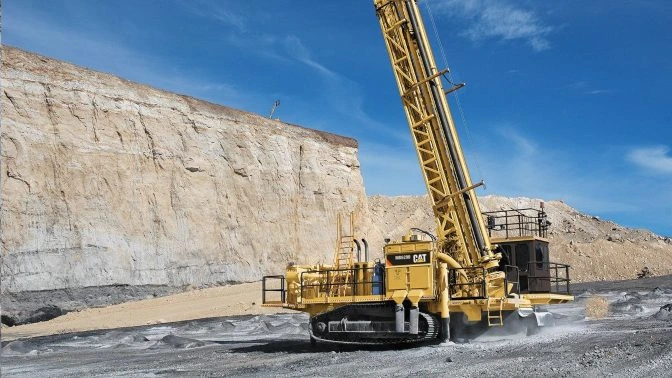
Underground Mining Equipment
Here are all the types of mining tools used in underground mining:- Crane lifts. Crane lifts are versatile in underground mining. These mining machines can be used to load explosives and carry other heavy loads and mining equipment.
- Continuous miners. Continuous miners are a type of mining tool used in room and pillar mining, and have a large rotating drum with carbide teeth to scrape coal from seams. These mining tools can mine up to five tons of coal a minute and account for approximately 45% of underground coal production. They also have conveyor belts that transport coal, making this an automated process that is controlled remotely.
- Drones. Underground mining drones, like Flyability’s Elios 3, are used for visual inspections in stopes, ore passes, ventilation shafts, conveyor belts, and other areas of an underground mine. Drone technology has allowed inspections to be conducted in areas that are unsafe for humans to enter, presenting an invaluable tool in such hazardous conditions. However not all drones can be used in mines. For a drone to be functional in an underground mine, it must be able to operate without GPS.
- Jumbo drills. Jumbo drills or mining drills are used to drill holes for explosives or to create mine shafts for miners to enter.
- Loaders and haulers. Loaders and haulers are an extremely compact and maneuverable type of mining tool used in underground mining, which is designed specifically for underground work. Just like their names suggest, these mining tools load and haul away minerals.
- Longwall mining machines. Longwall mining machines are the most common machines used in underground coal mining. These mining tools are used to build underground galleries and tunnels by leveraging the machine’s shearing capabilities.
- Refuge chambers. Refuge chambers are stand-alone safety chambers for miners that are equipped with oxygen, food, water, and sanitary necessities in case of an emergency. These chambers can safely hold miners for 96 hours to eight days.
- Rock dusters. Rock dusters are essential to preventing mining shafts from combusting. Dusters apply inert dust, or dust with a small amount of combustible materials, to counter the coal dust. This process is especially important when planned explosions are taking place.
- Roof bolters. Roof bolters secure the ceiling of the mine with safety jacks to help prevent cave-ins.
- Scoops. Scoops are used in room and pillar mining to load minerals onto trucks in an underground mine.
- Shotcrete machines. Shotcrete machines spray concrete along mine tunnel walls and ceilings to reinforce the structural integrity of a mine shaft or tunnel.
- Underground rails. Underground rails haul miners and materials in and out of a mine. It can sometimes take an hour or more for miners to arrive in the work zone.
- Ventilation systems. Ventilation systems are crucial for workers to be present in the mines due to the noxious nature of coal and, specifically, coal dust. These systems are used to provide clean air for workers and regulate temperatures underground.
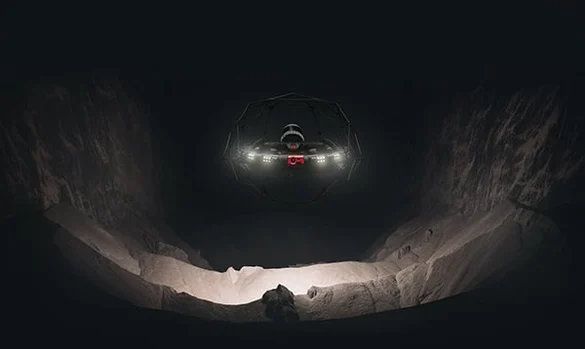
Mining Tools FAQ
Here are answers to the most commonly asked questions about mining tools, mining equipment, and mining machines.
What are mining tools?
Mining tools are the equipment and machines used to extract minerals from the earth. These tools are essential in various stages of mining, including extraction, material handling, and processing.
What are the main types of mining methods?
The four main types of mining methods are underground mining, open-pit mining, placer mining, and in-situ mining. The mining tools used depend on the type of material being extracted and the mining technique being employed.
What tools are used in surface mining?
Surface mining includes methods like strip mining, open-pit mining, and quarrying. Common tools for surface mining include bulldozers, dragline excavators, bucket-wheel excavators, and mining trucks.
What tools are used in underground mining?
Underground mining involves different methods like blast mining, room and pillar mining, and longwall mining. Tools used include cranes, continuous miners, jumbo drills, loaders, and longwall mining machines.
How do drones assist in mining?
Drones are used for surveying, mapping, and inspecting mines. In surface mining, drones help with overground surveys, while in underground mining, specialized drones (such as the Flyability Elios 3) assist in visual inspections in hazardous areas.
What is the difference between soft rock and hard rock mining?
Soft rock mining does not require explosives, while hard rock mining does. Soft rock tools include excavators and continuous miners, while hard rock mining uses hydraulic drills and explosives.
What are the key tools used for material handling in mining?
Material handling tools in mining include mining trucks, conveyors, and shovels, which are used to transport materials from the mine to processing areas.
What is the role of mining PPE (Personal Protective Equipment)?
Mining PPE is essential for the safety of miners and includes air respirators, cap lights, hearing protection, and reflective clothing, among other items. PPE protects miners from hazardous conditions like dust, debris, and toxic gases.
What is placer mining?
Placer mining is a technique used to extract gold from sand or gravel. This process uses tools like pans, sluices, and dredges to separate gold from other materials.
Can mining tools be used for both surface and underground mining?
Many tools are specialized for either surface or underground mining. However, certain equipment, like mining trucks and drones, can be used in both environments, depending on the specific needs of the operation.
